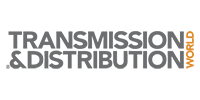 Maybe you missed it. It happened right before Thanksgiving. FERC announced a proposed rulemaking that will allow energy storage and distributed energy resource (DER) aggregators with resources on both sides of the meter to participate in the wholesale electric market as fully interactive grid resources. Referencing the nearby holiday, is FERC’s new rule a game changer or a turkey?
Maybe you missed it. It happened right before Thanksgiving. FERC announced a proposed rulemaking that will allow energy storage and distributed energy resource (DER) aggregators with resources on both sides of the meter to participate in the wholesale electric market as fully interactive grid resources. Referencing the nearby holiday, is FERC’s new rule a game changer or a turkey?
FERC claims storage resources and distributed energy resources (DERs) functioning under aggregators may not be able to fully participate in wholesale markets. FERC’s solution with the proposed rulemaking is to require each Regional Transmission Organization (RTO) and Independent System Operator (ISO) to revise its tariff to:
1) Establish rules that accommodate participation of storage resources in the organized wholesale electric markets; and
2) Define DER aggregators as a type of market participant that can participate in the organized wholesale electric markets under the rules and protocols that best accommodates the resources being aggregated.
The FERC announcement and the full notice of proposed rulemaking (NOPR) are available at this link.
Some parts of this proposed rule may seem ho-hum or unnecessary. For example, pumped storage has participated in wholesale markets for a long time. Why are new rules needed to accommodate storage resources? The answer is that each RTO and ISO has its own rules for the participation of different resource types and without a specific set of tariffs and rules for each one, the resource may have been unable to fully participate in the capacity, energy and ancillary service wholesale markets. Rules developed specifically for storage may make it more profitable for this resource category to participate in the market and thereby increase supply, innovation and competition. Not so ho-hum is the point that the proposed rules would allow storage resources to set the wholesale market clearing price (the price that all suppliers are paid). The ISOs/RTOs also will be required to set a minimum size storage resource not greater than 100 kW for participants in the storage market. Industry pundits claim that whoever can master energy storage will revolutionize the power industry. Will this proposed rule help storage providers move in that direction?





